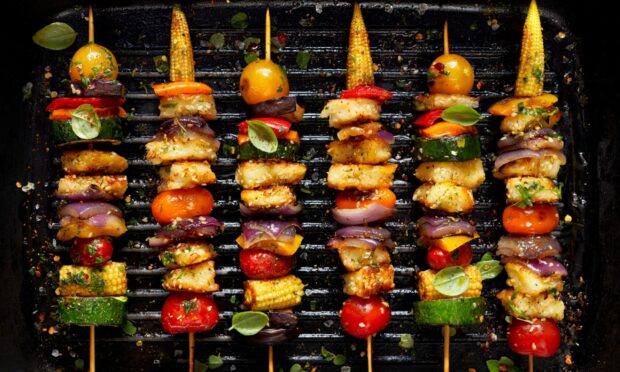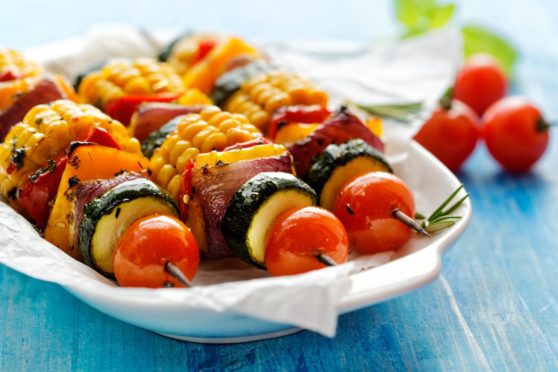Whether you’re vegetarian, vegan or looking for the best accompaniment for your burger, then this guide and recipe are likely to be for you when it comes to barbecuing vegetables.
National Barbecue Week has been extended by an extra seven days this year (July 5-18) to help us make the most of what we hope is mostly good weather and to mark its 25th year as a national day.
To help celebrate this, we’ve created the ultimate who’s who of vegetables so you can make the most of the season.
As barbecuing is traditionally associated with meat, the vegetables are often forgotten about, even if they’re just being used as a side dish to complement the meat. Whether you’re vegetarian, vegan or looking for the best accompaniment for your burger, then this guide is likely to be for you.
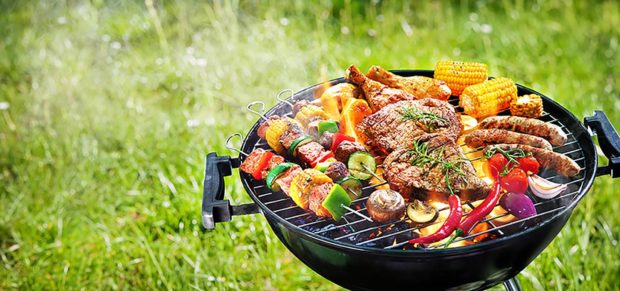
Vegetables
Who said the barbecue was just for cooking meat? In fact, food and drink writer Rukmini Iyer recently released a cookbook called The Green Barbecue that features just vegan and vegetarian recipes for the grill due to the increasing popularity of such diets as vegetarianism and veganism.
Veggie aficionados behind savoury seasoning brand Yondu have let us in on their top tips to making vegetables the star of the show when it comes to grilling.
According to their experts, some of the ways in which you can make veggies work for you on the barbecue include ensuring you’re cooking things at the right temperature, being creative with things like kebabs and using fruit to help sweeten the meal.
Make kebabs
When it comes to kebabs, we aren’t talking about the meaty doner kind, but rather chunks of vegetables layered up on a skewer. You’ll no doubt be familiar with the idea that often appear at children’s parties or family get-togethers – think cheese and pineapple chunks on a stick.
This week, be creative and combine different colours, textures and flavours on skewers. Find out what vegetables can be cut into chunks and have fun experimenting with different combinations.
Mushrooms are magic
Another favourite for the barbecue is mushrooms, which lend themselves to grilling perfectly and they’re often referred to as the “meat of the vegetable world” because they combine well with so many other ingredients.
Why not grab a portobello one for each person and stuff the mushrooms with cheese, couscous, or even other vegetables that take your fancy?
But if you’re looking for mushrooms to be part of the aforementioned kebabs, then button mushrooms won’t only grill faster than portobello ones, they are also an ideal size when it comes to skewering.
Cook at the right tempo
Controlling the timing of the barbecue is always tricky, regardless of what it is you’re cooking as each ingredient is likely to have a different amount of time it needs to cook for and it all needs to come together for everyone sitting down at the table at the same time.
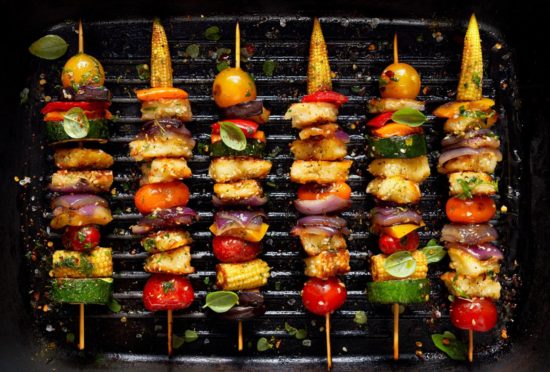
The experts at Yondu have thankfully put together some top tips to help:
- For sturdy vegetables such as potatoes or onions – wrap them in foil and start cooking once you’ve lit the barbecue.
- For big veggies like entire bell peppers, aubergines or artichokes – cook them on the edges of the grill, not directly over the fire, for about 30 minutes.
- For the sturdy vegetables such as carrots, turnips and cabbages – start charring them on the direct fire and then place them on the edges of the grill and cook until done.
- For the softies like courgettes, mushrooms and cherry tomatoes – cook them over direct fire for a few minutes right before serving.
Sweeten things with fruit
Though fruit isn’t usually associated with barbecuing, other than tomatoes and the classic dessert of banana split, using fruit in your grilling can help to sweeten things up.
Regardless of whether your main is a meat, fish or veggie dish, fruits can also be a great accompaniment. Most of them are tangy and juicy, much like many of the condiments we often use on our barbecued food – think HP sauce, tomato ketchup and burger relish.
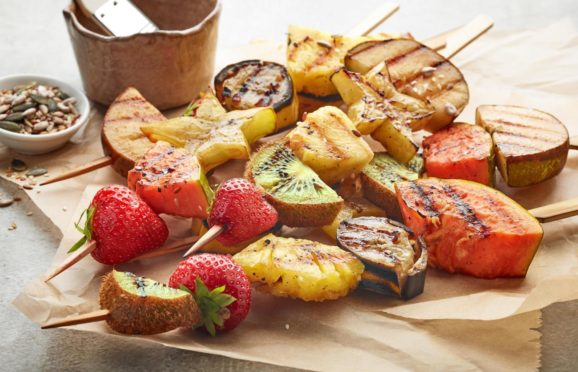
Also, almost every fruit can be grilled, so whether it’s pears, apples, pineapples, strawberries, watermelon, peaches or melons, there’ll undoubtedly be one that suits.
Recipe
To make vegetables the star of the show, have a go at one of Rukmini Iyer’s recipes from her new cookbook below.
Rukmini Iyer’s squash with charred carrots, red onions, coriander seeds, pistachios and lime
Serves 4
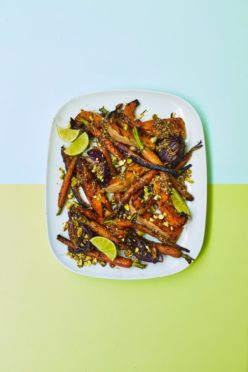
Ingredients
- 600g squash, cut into 2½ cm slices (no need to peel)
- 150g baby carrots, whole and unpeeled (or 3 medium carrots, peeled and halved)
- 1 red onion, quartered, core intact
- 2 tsp olive oil
- 1 tsp coriander seeds, crushed
- 1 tsp ground cumin
- 1 tsp sea salt flakes
- 50g pistachios, roughly chopped
For the dressing:
- 2 tbsp extra virgin olive oil
- 1 lime, zest and juice
- 2 tsp coriander seeds, crushed
- ½ tsp black peppercorns, crushed
- 1 tsp sea salt flakes
Method
- Tip the squash, carrots and red onion into a large bowl, and mix with the oil, spices and sea salt flakes.
- In a separate bowl, mix the extra virgin olive oil, lime zest and juice, coriander seeds, crushed black pepper and sea salt flakes. Taste and adjust the salt as needed, and set aside.
- Once your barbecue is ready, lay the squash slices on the grill, and cook for 25 minutes on each side, covered if you can. The carrots and the onions should only take about 15 minutes per side, so pop them on 10 minutes after the squash and take them off 10 minutes before the squash.
- Once the vegetables are all cooked through, transfer them to a platter and gently mix with the lime and coriander-seed dressing. Scatter with the pistachios, and serve hot or warm.
Recipe from The Green Barbecue: Vegan & Vegetarian Recipes To Cook Outdoors & In by Rukmini Iyer, photography by David Loftus, is published by Square Peg, priced £17.99.
